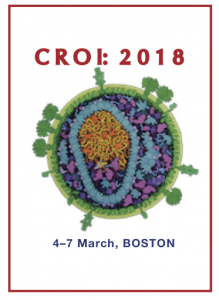PrEP at CROI 2018 (part 1): Access in Australia and the US
14 March 2018. Related: Conference reports, HIV prevention and transmission, CROI 25 (Retrovirus) 2018.
 Simon Collins, HIV i-Base
Simon Collins, HIV i-Base
Strategies to reduce incidence of new HIV infections was one of the key themes at CROI 2018, with at least 80 studies on PrEP included in the programme.
These covered all scientific aspects of PrEP research, new drugs and formulations, current use and acceptability and ways to expand access to PrEP to diverse populations, some studies on adherence and a few looking at STIs.
This report starts with two different approaches to access to PrEP in Australia and the US.
A second linked report covers oral abstract sessions on new drugs presented at the same oral session.
PrEP rapidly reduces HIV incidence in Australia
Positive results from a PrEP implementation study in Australia showed an impressive public health approach in New South Wales. The results, presented by Andrew Grulich from the Kirby Institute, showed that making PrEP widely available can quickly reduce HIV incidence. [1]
This programme was developed as part of the government’s policy to eliminate HIV incidence as part of their 90:90:90 target. As approximately 80% of new infections are in gay men, this included the aim to make PrEP widely available within a year to people at high risk, prioritising gay and bisexual men, (less than 1% of participants were trans or other risk). The programme initially planned for 3700 men to use PrEP (based on 2.3% of the population identifying as gay, 8% of who were estimated to have high risks that would make them eligible (recent STI, condomless sex or chemsex). However, when the enrolment goal was reached within eight months, the cap was removed, and uptake steadily increased to reaching more than 9000 men over two years.
This was an adult study, with 8% aged 18-24, 40% aged 25-34, 30% age 35-44 and 26% older than 45. Approximately 90% of participants lived in Sydney, with 40% living in a gay-area postcode. Approximately half the participants accessed PrEP from a public clinic and half from a private GP.
In the first year, HIV diagnoses overall fell by 25% (from n=295 in the year before PrEP to 221 after the first year) and recent infections reduced by 32% (from 149 to 102). However, the overall HIV incidence was lower than predicted (<1/1000 PY compared to the expected rate of 2/100), perhaps linked to other polices including early use of ART.
For Australian, English or Asian participants, HIV incidence dropped in all age groups and geographical regions, but the programme didn’t reach non-English speaking men born in other countries, where annual HIV diagnoses increased in this group by 24% (from n=17 to 21). This, together with a greater focus on younger people, are planned.
When asked where the resources for health clinics came from to enable the programme, this was mainly from the drive and belief by health workers to enable this access.
When asked for ideas on how to achieve similar programmes in other countries, Grulich was clear: “the political support to end HIV was essential – and we were clear that it couldn’t happen without PrEP”.
Inequity of PrEP in the US: those most in need have least access
A more sobering presentation from Dawn Smith from the US CDC, showed that despite PrEP being approved in the US more than five years ago, racial disparities in access meant that those in most need of PrEP are least likely to be using it.
This study used new methodology for compiling local, regional and national estimates of numbers of people with an indication for PrEP, by race, US state and transmission risk group. Updated 2015 estimates for the need for PrEP now used new sub-population data at a state level from the 2016 census that were not previously available. The model estimated that 25% of gay and bisexual men overall would have an indication for PrEP and included recent data, race and other risks (heterosexual, of injecting drugs).
A similar number of people were estimated to need PrEP (1.1 million), but almost doubled the demand for MSM, reducing estimates for heterosexuals and people who inject drugs. A breakdown of this total by race was 44% black (58% of MSM and 64% of heterosexuals) 35% Hispanic and 26% white. The denominator for actual use was a lower underestimate, covering 85% of commercial and mail order pharmacies, but not people in integrated health systems (such as the VA, military etc).
When the number of PrEP prescriptions during 2015-2016 were compiled using 2015 estimates of indications for PrEP, the disparity of access became even more clear. Nationwide, overall 8% of people with an indication for PrEP were able to access it, but by ethnicity, PrEP was prescribed to 14% of white, 3% of Hispanic and only 1% of black people with an indication for PrEP.
The results were summarised as an essential call to urgent action: “Inequitable access to and use of PrEP by black Americans is an urgent problem that must be addressed. The high need for PrEP among black MSM and women is largely unmet. Until addressed, this situation will continue to result in disparity in new HIV infections”.
References
Unless stated otherwise, all references are to the Programme and Abstracts of the 25th Conference on Retroviruses and Opportunistic Infections (CROI 2018), 4–7 March 2018, Boston.
http://www.croiconference.org
- Grulich A et al. Rapid reduction in HIV diagnoses after targeted PrEP implementation in New South Wales, Australia. CROI 2018, Boston. Oral abstract 88.
www.croiconference.org/sessions/rapid-reduction-hiv-diagnoses-after-targeted-prep-implementation-nsw-australia (abstract)
www.croiwebcasts.org/console/player/37190 (webcast) - Smith D et al. By race/ethnicity, blacks have highest number needing PrEP in the United States 2015. CROI 2018, Boston. Oral abstract 86.
www.croiconference.org/sessions/raceethnicity-blacks-have-highest-number-needing-prep-united-states-2015 (abstract)
www.croiwebcasts.org/console/player/37188 (webcast)

